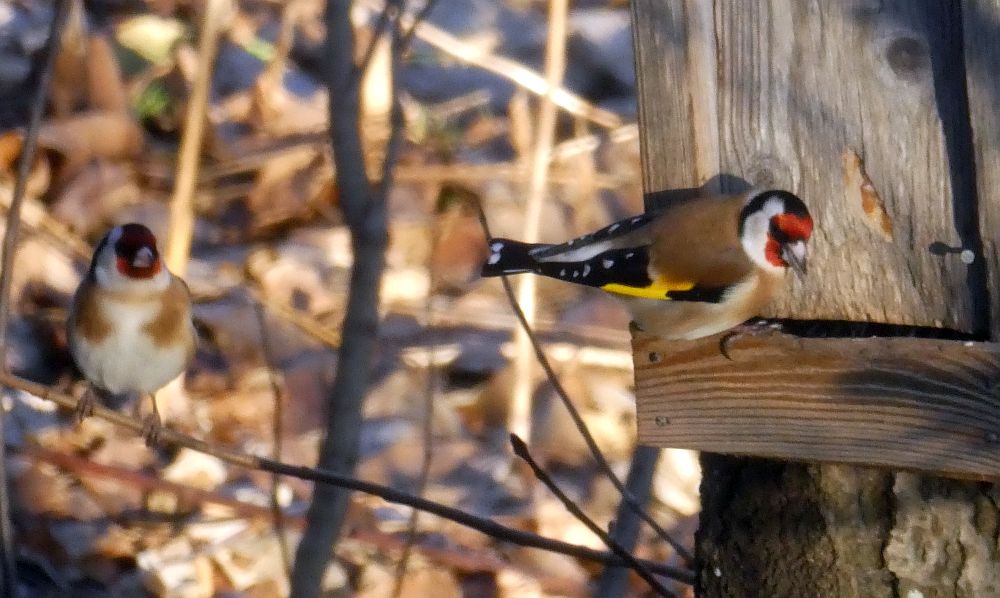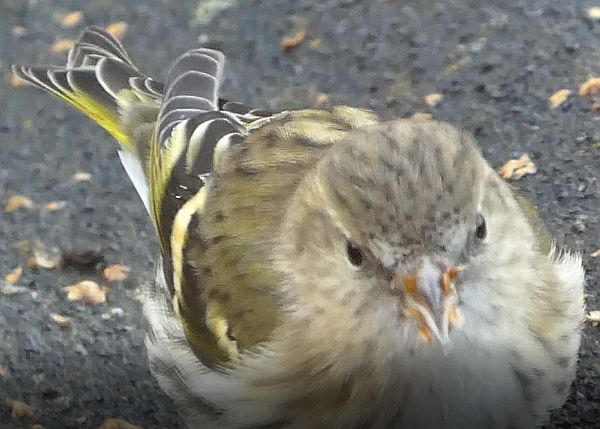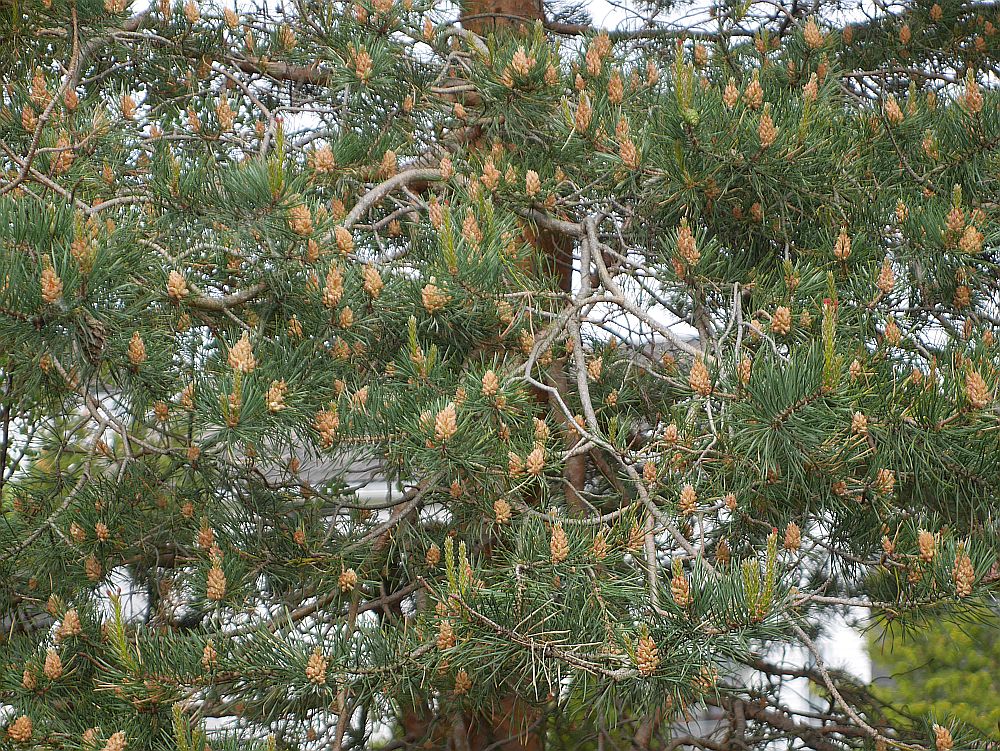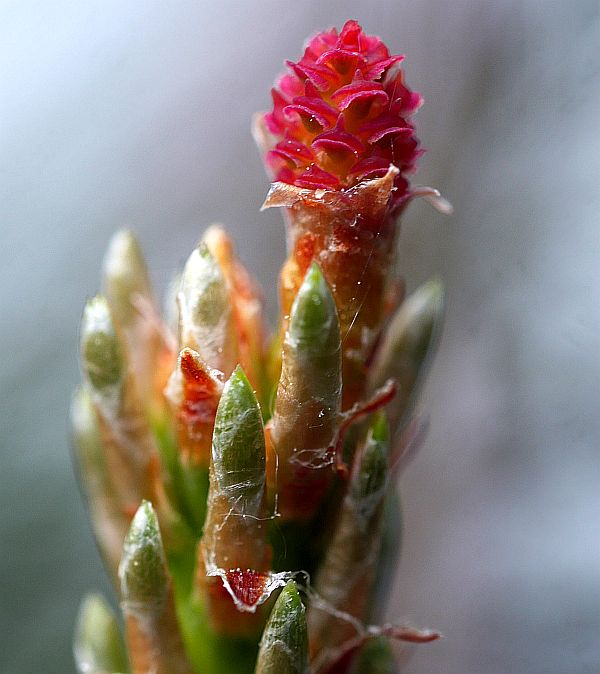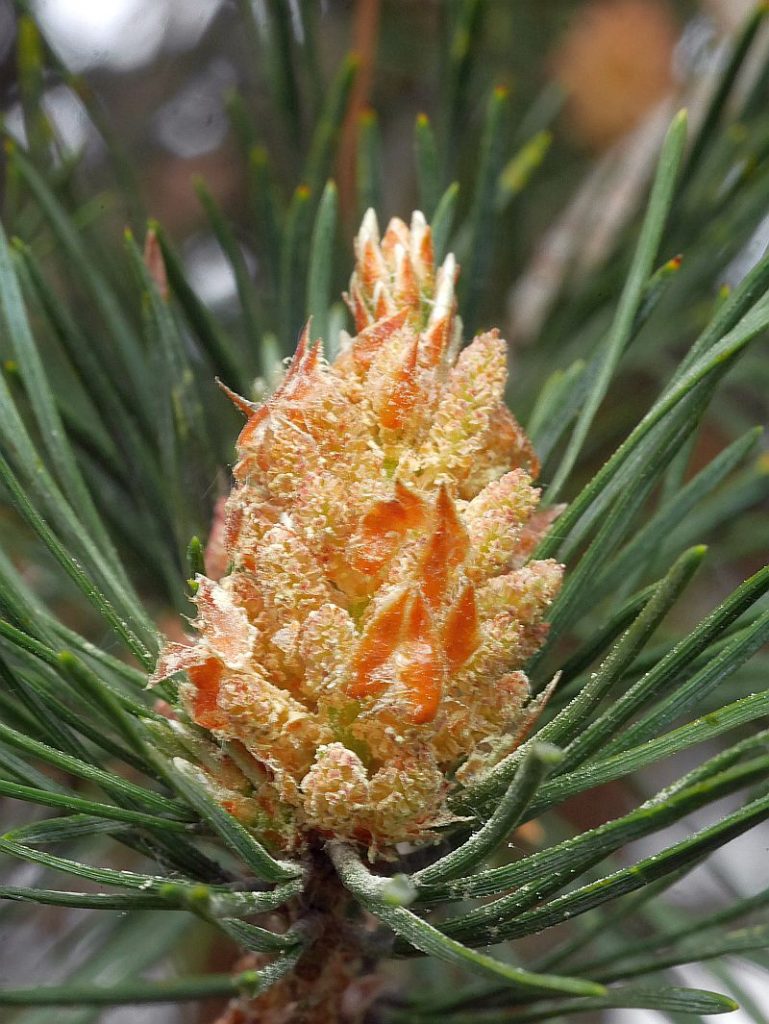Over the last couple of days there’ve been large numbers of birds in the garden making me think of Alfred Hitchcock’s The Birds, although there have been fortunately no casualties as far as I know. I try to limit the amount of bird food I put out (as its production isn’t good for birds) and it’s good to see that most species are still eating natural food.
This winter there’ve been reports from all over the county of unusual numbers of overwintering bramblings (bjørkefink) with flocks up to 300 birds recorded. I’ve had smaller flocks of 20-30 for some time, but yesterday they were everywhere in the garden and at least 140 birds were present, a new winter record for Malvik kommune! The films below show them both at the bird feeder, feeding on rowan berries (eating the seed and discarding the flesh) and also on the ground perhaps feeding on birch seed?
Apart from that there was a sizeable flock of some 60 waxwings (sidensvans) on guelder rose / krossved (Viburnum opulus) and hawthorn (hagtorn) , 11 bullfinches (dompap), 50 house sparrows (gråspurv), 6 goldfinches (stillits) still mostly on burdock seed, 16 siskins (on birch seed), 6 greenfinches (grønnfink), 2 hawfinches (kjernebiter) seen on plum stones and rowan berries, a single robin (rødstrupe), a couple of fieldfares (gråtrost) on apples and hawthorn, a great spotted woodpecker (flaggspett) and great and blue tits both establishing territories now. In addition, a flock of 500-600 jackdaws (kaie) fly over to the roost every evening.
Bramblings with a hawfinch:
Bramblings with a hawfinch feeding on rowan seed (at the end, both birds are seen to discard the flesh). A greenfinch was also feeding on rowan.
Bramblings on the ground (feeding on birch seed?)
Large flock of bramblings at the bird feeder:

